SPECULO [in]visible
1| GENERIC CONTEXT
In the contemporary world, the subject of air pollution has become a predominant field of debate and research for scientists, sociologists and ecologists. With the aim of improving air quality, a series of environmental health actions have been taken both in rural and urban areas. Nonetheless, with industries producing a constant stream of contaminating agents, the air pollution phenomenon continues to affect both the natural and human ecosystems.
2| LOCAL CONTEXT
Known as “The Black Town”, Copsa Mica contours a powerful yet real image of how industrial pollution has altered and damaged the both the environmental and human life cycle of an entire rural area. Located in the North of Transylvania, the town represents an ex-Soviet satellite that became a forced –industrialized concentration area at the beginning of the Communist period in Romania. Two factories, one producing carbon black and the other one – a smelter, have been the main contaminating agents until 1993 and 2009. The quality of the air has affected both the physiological and psychological health of the inhabitants, while the soil contamination made it impossible to harvest or grow anything within the perimeter of the area. With little media attention and no Governmental funds, Copsa Mica continues to be an unexplored case of industrial pollution, bearing the political and economical burdens of a past authoritarian system.
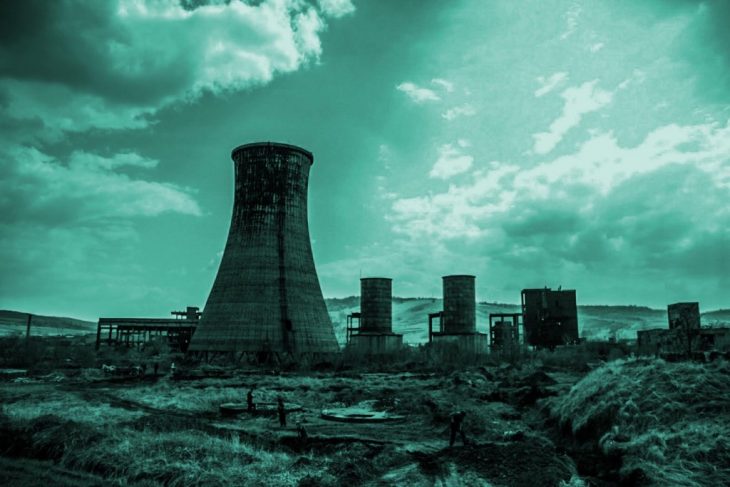
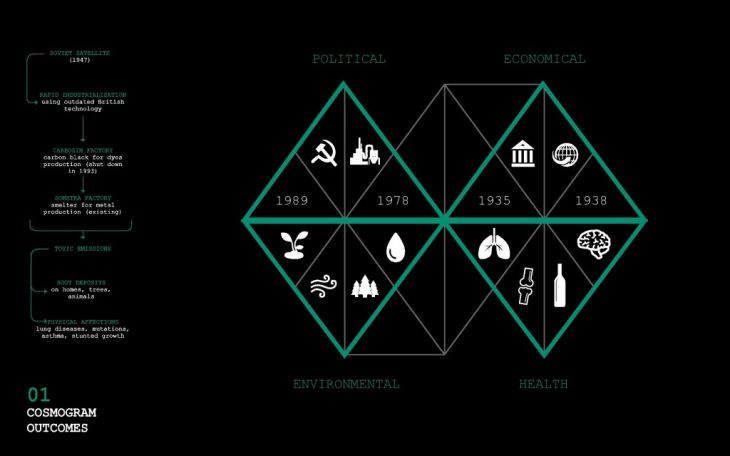
3| APPROACH
Beyond the complex issues of the pollution factors within the site, the project responds to the two ramifications of the concept of INVISIBILITY: the chemical invisibility (particles) and the political invisibility (political camouflage and absence of concrete data). Aiming to shift the generic understanding of pollution, the proposal focuses of generating a specific apprehension of air pollution. By deconstructing the atmosphere, both in a chemical and metaphorical manner, the device intents to make the invisible – visible.
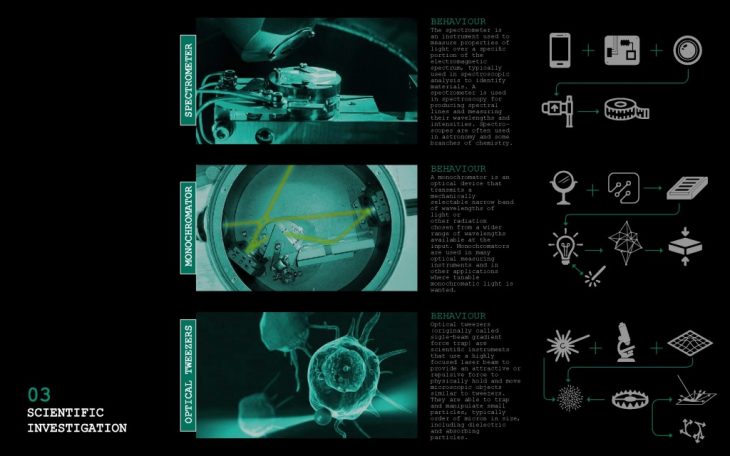
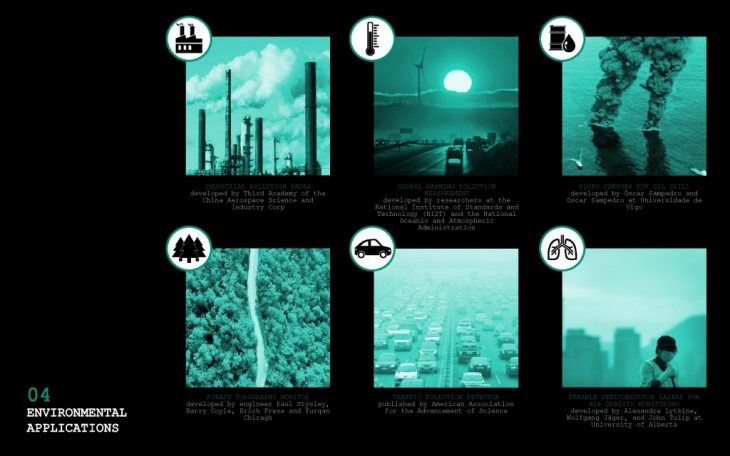
4| CONCEPT
SPECULO represents an optical apparatus that uses motion and reflection as a method of decomposing the chemical elements of the atmosphere with the aim of creating a system of representation that translates the particulate matter in a series of visual networks. Exploring the boundaries of political ambiguity and scientific research, the prototype operates with a dual set of components: the immaterial ones (light and fog) and the physical ones (movement and mirrors).
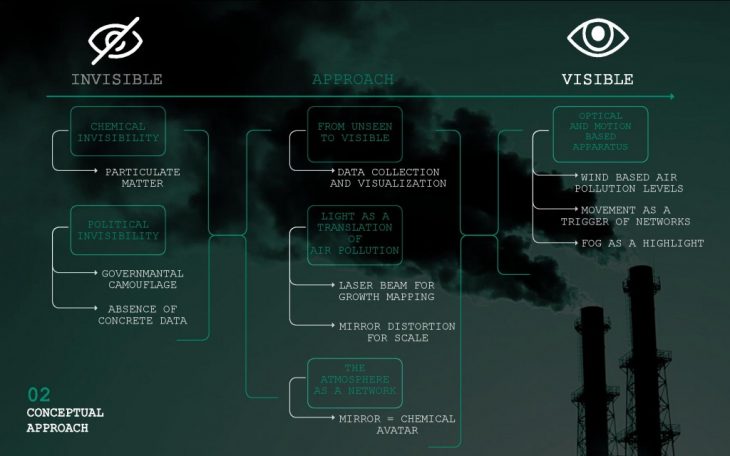
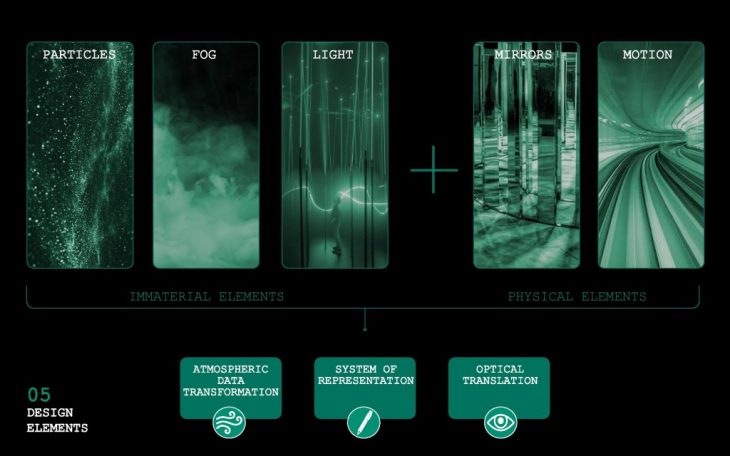
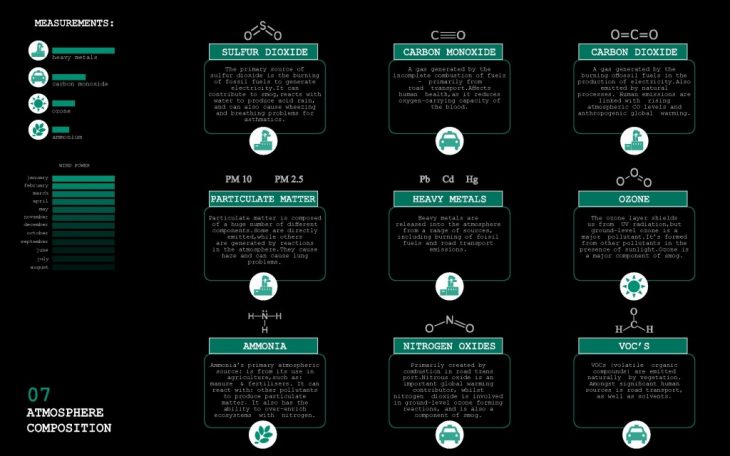
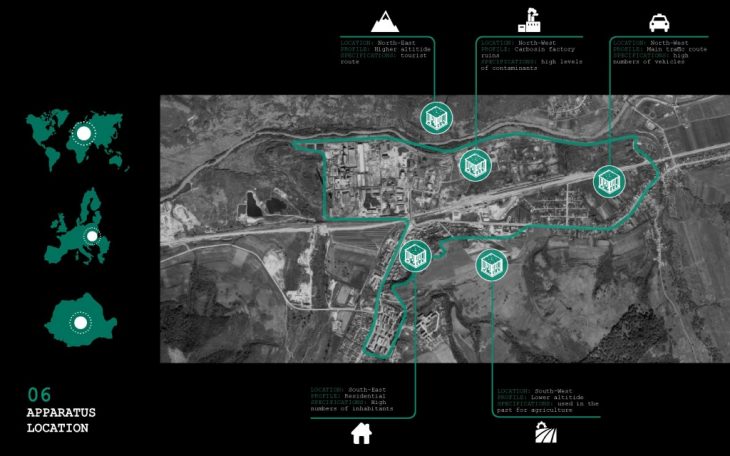
5| MECHANISM
Using the atmosphere as a main parameter, the apparatus captures the levels of air pollutants contained and spread by the wind with the help of air pollution sensors. The data is transferred to a central laser beam that creates a vertical movement in order to showcase the ascending and descending air contaminants. While moving, the beam reflects upon a network of 14 mirrors, each one of them representing a chemical element that composes the atmosphere of the site. The movement follows an algorithmic process that deconstructs and constructs a series of paths. Each path contours a dialogue and a molecular connection, enabling a new method of understanding the complexities and connections within the atmospheric spectrum.
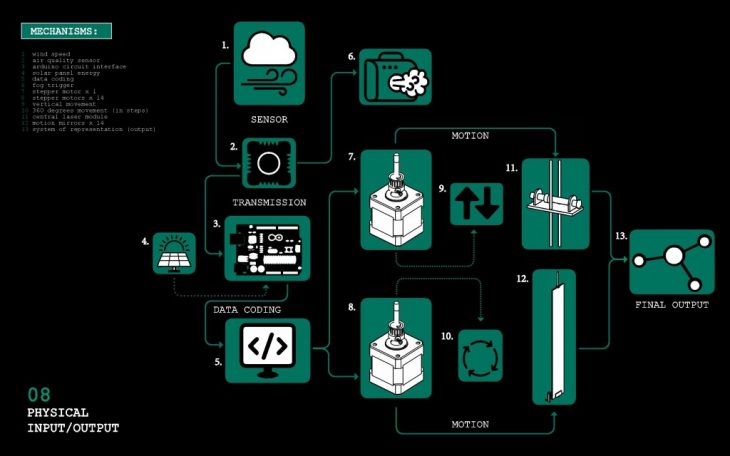

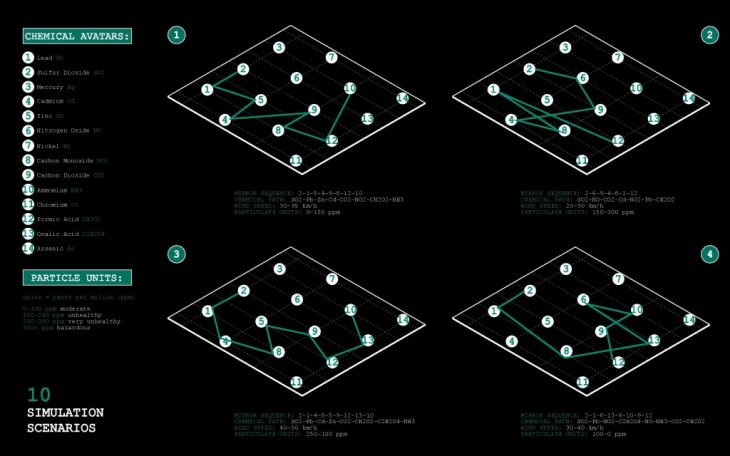
06| FINAL DESIGN
Focusing on transforming the unseen in a visual phenomenon, SPECULO aims towards generating a new methodology and system of representation, one that can serve as a premise for developing a response and action towards the political, chemical, economical and environmental contaminants contained within an ‘invisible’ ex-industrial town.
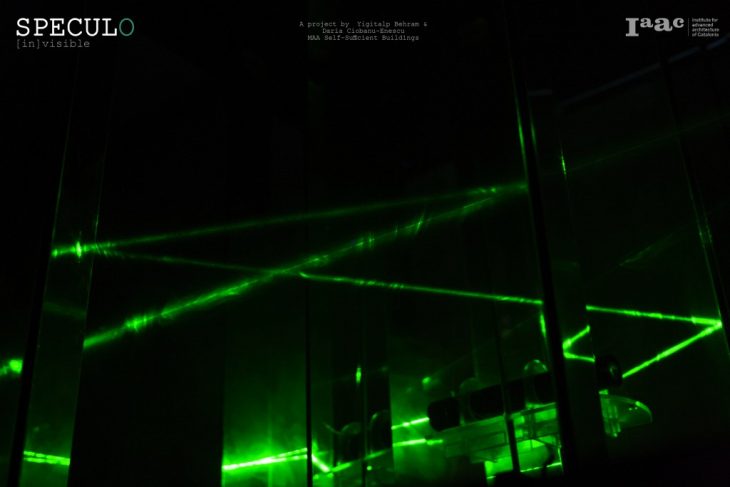
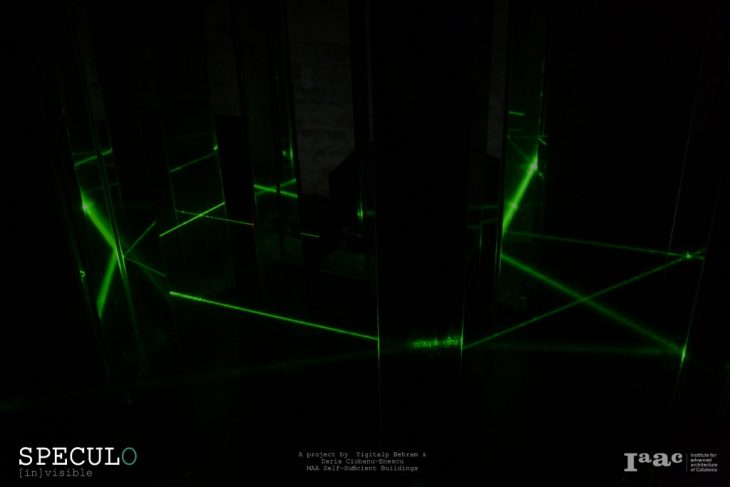

SPECULO is a project developed at IaaC, Institute for Advanced Architecture of Catalonia, developed at Master in Advanced Architecture 2018/19 by:
Students: Yigitalp Behram, Daria Ciobanu-Enescu
Faculty: Enric Ruiz-Geli, Josep Perello, Mireia Luzarraga, Alejandro Muino
Assistants: Mohamad Rachid Jalloul, Francois Nour